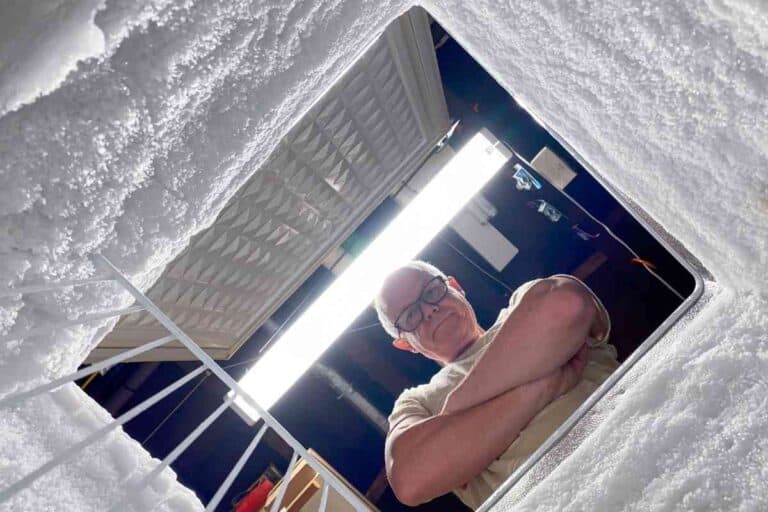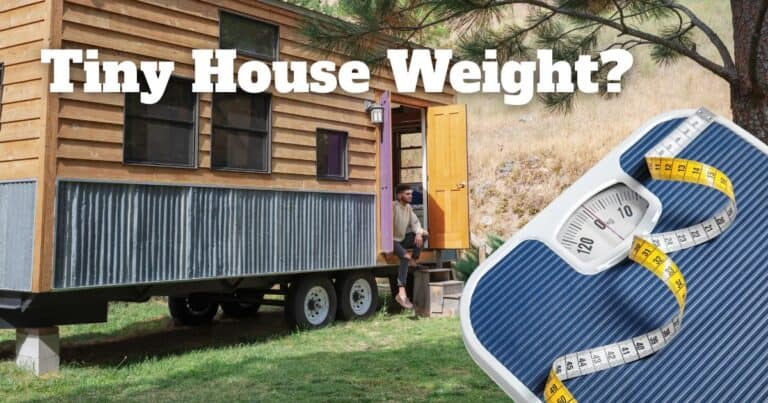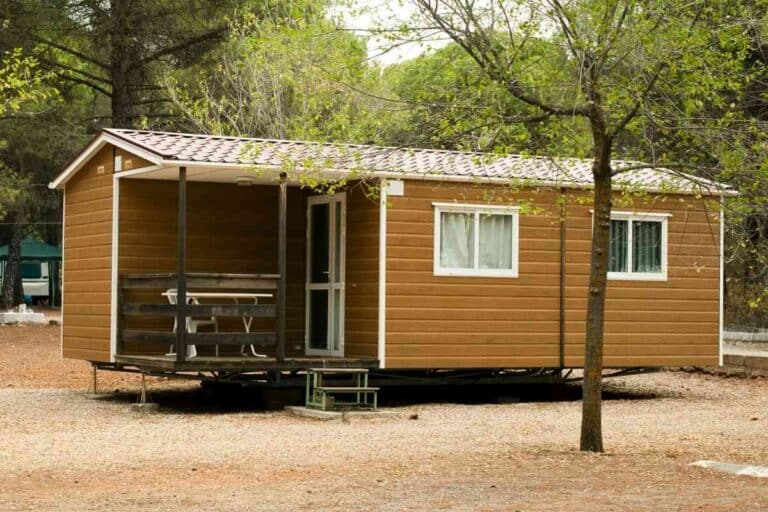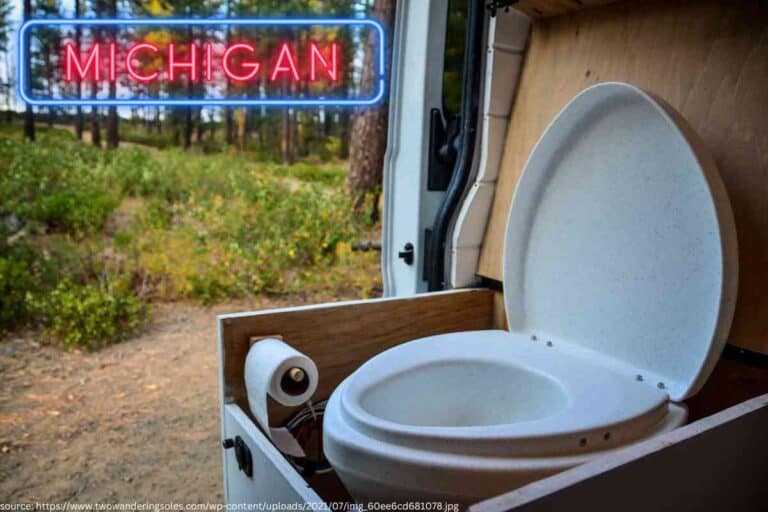6 Reasons Why Your RV Kitchen Sink Smells
A moving kitchen can sometimes come with unique problems, such as a foul RV sink smell. Knowing how to find and remove this smell is an important skill. Your RV should function as your home away from home, and no one wants their home smelling like the sewer has had a party in their kitchen sink. Not only is the smell an annoyance, but it could also signal a deeper problem within your water system.

Why does my RV sink smell bad?
Reasons your RV sink has a foul smell include:
- Decaying food and waste
- Food build-up around the drain
- An ineffective seal around the sink basin
- Anti-siphon trap vent under the sink is compromised
- Water left sitting in the sink drain trap
Fortunately, the root of a foul-smelling RV kitchen sink is usually easy to track down if you know where to look. We’ll break down some of the key culprits as well as recommendations to fix this stinky problem.
We’ve touched base with other RV road warriors and plumbers to get expert opinions on where to look and how to remedy an RV kitchen sink that smells like the sewer.
Why Does It Stink Under My Camper Sink
Usually, the unseemly smells of RV life leave the black tank to blame. However, common problems with sewage breakdown and bathroom pipes will leave a sewer aroma floating through the interior of your home on wheels.
So it can be surprising when your nose leads you to the sink instead of the bathroom.
There are several causes for the dreaded RV kitchen sink aroma. Let’s investigate below.
Decaying Food and Waste
Decaying food and waste built up over time in your kitchen sink pipe system is the bane of any kitchen’s existence. RVs tend to have small diameter pipes that make the possibility of build-up even worse. In addition, the U-shaped pipe under the sink is especially sensitive to food and waste build-up over time.
In sink terminology, this is called the P-trap. It has an important function and is meant to keep a small amount of water in the pipe system to operate as a barrier for sewer odors coming back up through the sink. Waste, unfortunately also likes to collect here.
The Fix: To check for and remove blockages in the P-trap U-shaped pipe below your sink. You can do this in three ways: with a plunger, by forcing water through the pipe with a hydro-jetter, or by disassembling this u-bend and cleaning it manually. The latter is recommended to only be attempted by a licensed plumber.
Most importantly, don’t let food waste go down the drain at all. Invest in a strainer that will prevent build-up from happening again.
Food Build Up Around The Drain
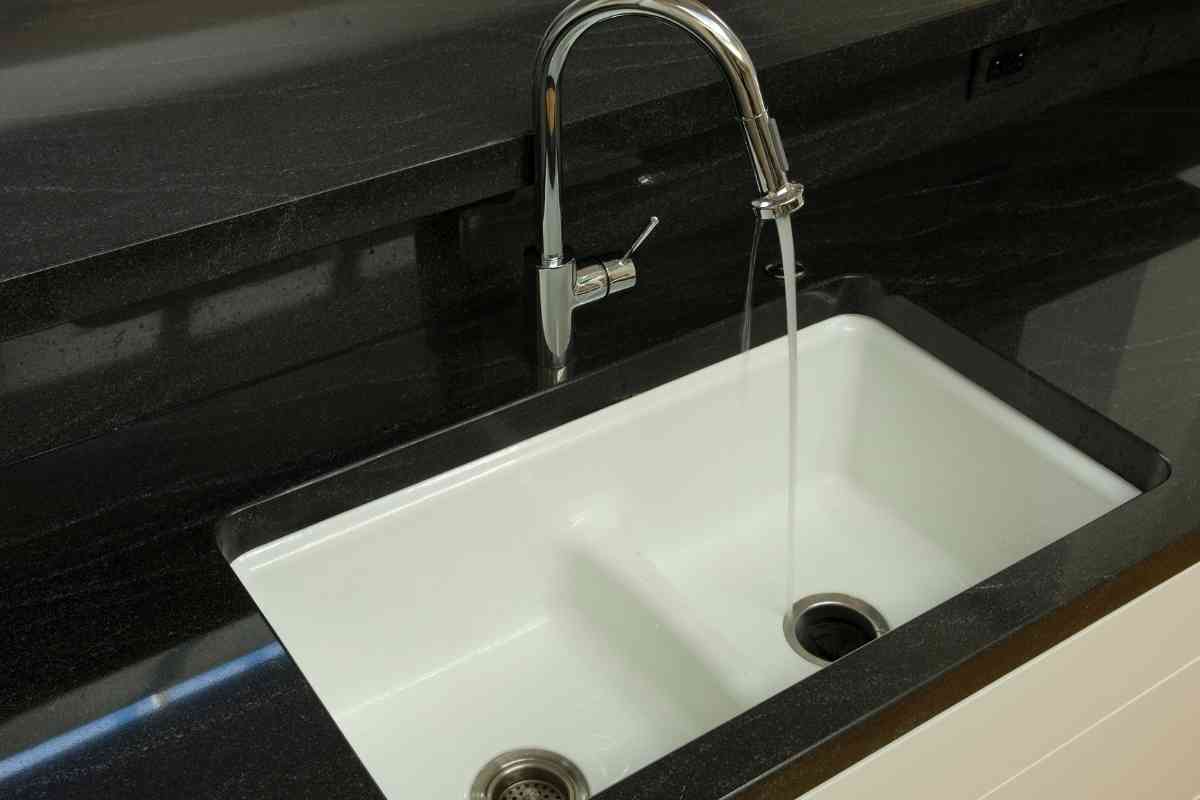
This may seem obvious but can be an underestimated cause of the sewer smell from your RV kitchen sink. Over time food waste such as oil, grease, and debris can build up around the drain, with even impurities from the water itself helping to create slimy, smelly build up.
The Fix: To alleviate the stench, give the drain area a good scrub with baking soda. Finish with a white vinegar wash that neutralizes the smell and breaks debris. Rinse thoroughly with water and commit to regular maintenance to prevent the same problem in the future.
An Ineffective Seal Around The Sink Basin
An ineffective seal around the basin of your sink can cause water to enter the space beneath the basin causing water to drip and create a moist bacteria happy area.
The Fix: Check all seals around the top and underside of the sink to make sure there is not a water leak. If you can detect where it is coming from, replace the seals, and air the bottom of the sink out so it can dry completely.
Anti Siphon Trap Vent Under The Sink Is Compromised
The anti siphon trap vent (ASTVD) under your RV sink is responsible for keeping sewer smells at bay from under sink. You can identify it by looking for a vertical pipe that ends with a black screw cap. Inside this rather simple looking plumbing apparatus is a spring with a round rubber flap that operates as a check valve. Its main function is to let fresh air in and keep sewer gasses out.
In addition, it also helps your sink to drain by opening to create negative pressure and a “flush” through the u-bend pipe just below the basin.
The FIx: Two problems can arise with this apparatus: a broken spring or a dried up rubber gasket. Replacements are easy to find but might not be convenient to locate on the road. If this is the case and the gasket is the culprit, you can try adding a little grease to the gasket to see if that will help it to function again.
A newer innovation called the HepvO system can replace the P-trap concept completely and is a great alternative for RVers. While the P-trap can see water sloshing around while the RV moves releasing unsavory smells, the HepvO system doesn’t require sitting water and traps smells inside.
Water Left Sitting In The Sink Drain Trap
A sewer smell emanating from the sink can often come after an RV has sat for a while. This is because the water barrier that resides in the P-trap or U-bend pipe under your sink has dried up over time. When there is no water in the P-trap, the water barrier that keeps the sewer-like smells from backing up into the interior of your RV is effectively removed, allowing the sewer smells to fly.
The Fix: Fill the p-trap back up with a little water and let it rest. This should block the smell from coming into the main interior.
How To Prevent A Sewer Smell From Under Your RV Sink
The good news is that preventing the sewer smell from happening in your RV sink is not difficult. A regular cleaning using a mild soap and baking soda paste will help keep it in tip-top shape for your travels. Running a baking soda and vinegar mix down the drain from time to time can also break up debris buildup.
In addition, keep these tips in mind before you hit the road on your next adventure.
- Before leaving, make sure there is sitting water in your P-trap. Often sitting RVs will see this water evaporate, removing the water barrier that keeps sewer smells from entering through the sink.
- Get a catch strainer for the sink. By all costs, do not let food waste go down the sink or you might be dealing with a pesky build-up problem down the line.
- Check sink seals and the trap vent before taking a long trip.
- Keep spare parts on hand. For example, a backup spring and gasket for your trap vent might be a lifesaver when you’re on the road.
- Consider swapping out the traditional P-trap with a HepvO system that doesn’t have the water barrier vulnerability.

